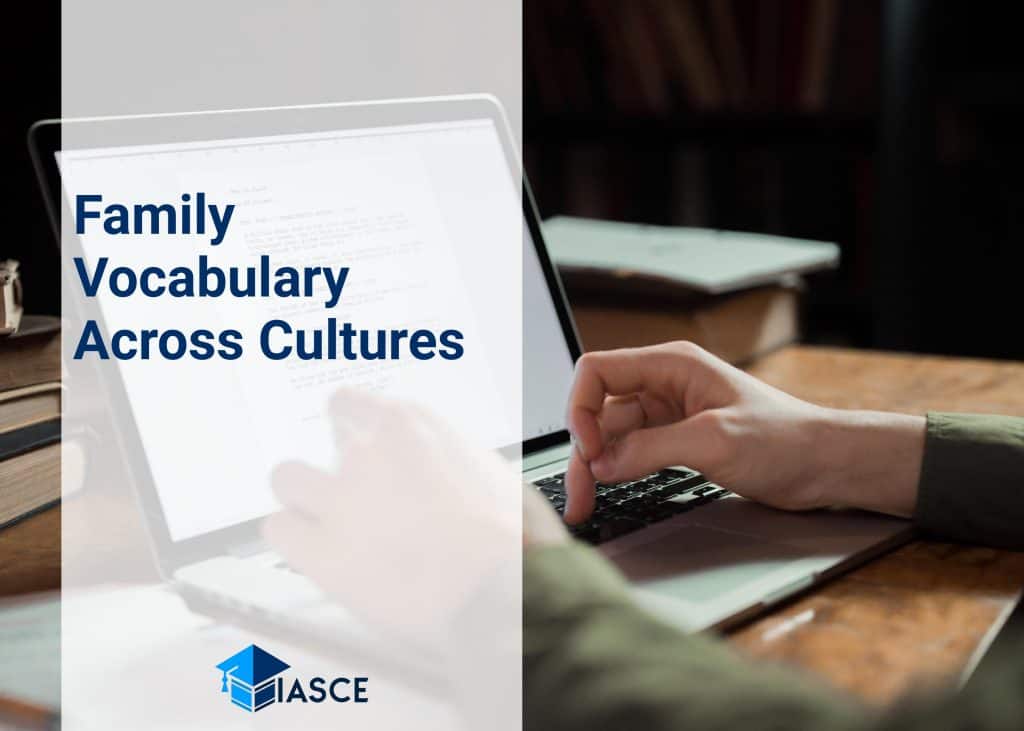I’ve always been fascinated by language, particularly the plethora of words we use to describe our family members. This article will take you on a journey through the intricate labyrinth of family vocabulary.
It’s not just about ‘mom’ and ‘dad’, but rather an exploration into the rich tapestry of terms used to denote relationships within a clan. From siblings and cousins to in-laws and extended relatives, I’ll guide you through this linguistic maze.
So, sit back as we delve into this fascinating subject matter – it’s time to enrich your lexicon with the diverse vocabulary of family members!
The Richness of Family Terminologies Across Cultures
Diving into the world of languages, I’ve often found myself captivated by the wide range of terms for family members across different cultures. It’s a rich and fascinating field that showcases cultural diversity.
Take for example, the Hawaiian language. They use only one word, ‘ohana’, to refer to all family members. This single term embodies their cultural belief that families are bound together and must cooperate and remember each other.
Switching over to Asia, we find a stark contrast in Chinese culture. They have a complex system of kinship terminology. For instance, paternal and maternal uncles have distinct names: “bofu” for your father’s brother and “jiujiu” for your mother’s brother.
Here’s how it looks:
|
Relationship |
Chinese Term |
|---|---|
|
Father’s Brother |
Bofu |
|
Mother’s Brother |
Jiujiu |
In contrast, English simply uses ‘uncle’ for both relationships!
Now let’s explore Arabic, another language famous for its rich vocabulary in describing familial ties. There are specific words to distinguish between elder and younger siblings. Your older brother is your “akh al-kabir”, while your younger brother is your “akh as-saghir”.
Consider this table:
|
Relationship |
Arabic Term |
|---|---|
|
Older Brother |
Akh al-Kabir |
|
Younger Brother |
Akh as-Saghir |
Again, English consolidates these under the common term ‘brother’.
This brief linguistic journey through various cultures underscores how diverse our world truly is. Remember though that language doesn’t just mirror societal norms; it also helps shape them! So next time you address a family member or talk about your relatives in another language—think about what those terms reveal about that culture’s values and traditions.
How Language Shapes Our Understanding of Kinship
Diving into the world of kinship vocabulary, I’ve noticed a fascinating pattern. The terms we use for family members aren’t just random words; they’re deeply embedded in our cultural perspectives and social structures.
Take a look at English, for instance. We’ve got straightforward terms like “mother” and “father”, but also more nuanced ones like “step-sister” or “half-brother”. These words don’t simply denote biological connections; they carry a societal context as well. In other cultures, though, the linguistic landscape can be quite different.
Let’s say you’re learning Mandarin Chinese. You’ll find that family terminology is much more specific than it is in English. For example:
|
English |
Mandarin |
|---|---|
|
Cousin (general) |
Tang-ge (older male cousin with same surname) |
This isn’t just about language being tricky—it’s about how each culture understands family relationships.
A similar situation pops up when you delve into Hawaiian kinship terminology. You’ll notice there are no separate words for ‘brother’ or ‘sister’. Instead they use:
-
Kaikuaʻana – older sibling
-
Kaikaina – younger sibling
These generic terms reflect an emphasis on age hierarchy rather than gender differentiation.
There’s no doubt that the way we talk about family can shape our perceptions of these relationships profoundly. When I consider my own experiences learning Spanish, I remember struggling to differentiate between ‘primo’ and ‘prima’, only to realize later that it was subtly shaping my understanding—reminding me constantly of the gender distinction within familial ties.
So next time you’re learning a new language, pay attention to these unique kinship terms—they offer valuable insights into cultural norms and values beyond their basic definitions.
Conclusion: The Power and Diversity of Family Vocabulary
Diving into the world of family vocabulary has been an intriguing linguistic journey. We’ve seen how this particular segment of our language is rich in diversity, reflecting the complexity and variety inherent in our familial relationships.
We’ve learned how kinship terms vary across different cultures, each with its own unique set of words to describe family members. It’s fascinating to see how these terms can be influenced by factors such as social structure, cultural norms, and even geographical location.
This exploration has also allowed us better understand the power behind these words. They’re not just labels we use for identification but are imbued with deep emotional significance. Words like ‘mother’, ‘brother’, or ‘grandparent’ carry a profound sense of connection, belonging, love or sometimes even conflict.
Let’s summarize some key takeaways:
-
Family vocabulary is diverse and complex.
-
Kinship terms can reveal interesting insights about a culture.
-
These words hold deep emotional significance.
As language enthusiasts on a never-ending journey for knowledge, it’s thrilling to uncover these layers behind what may seem as simple everyday words. I hope you found this exploration as enlightening as I did!
Remember that language is always evolving – new words emerge while others fade away; meanings shift over time; usage changes from one generation to another. That’s why it’s important for us to keep exploring and learning. Who knows? Our next linguistic adventure might be just around the corner!

